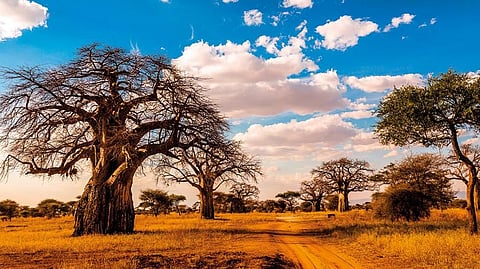On the wild side in Tanzania
Want to go on a stunning safari minus the crowd? The wilderness of Tanzania has it all

Choosing the ultimate safari is a tough call. How I love Kaingo, surrounded by the leopards and carmine bee-eaters of Zambia’s magnificent Luangwa Valley, and there is hardly a day when I do not pine for the Masai Mara – Kenya’s incomparable carnivore stronghold – the place where I first fell under the spell of Africa half a century ago.
If you would rather spend time with elephants, you should go to Botswana’s dreamy Okavango Delta, or Samburu game reserve in Northern Kenya. But for me, given one last chance to live like a lion in the sun and the wind, it would have to be Namiri Plains in the Serengeti.
When it comes to boundless space and endless horizons combined with Africa’s wildlife in all its staggering abundance and diversity, this remote corner of Tanzania ticks all the boxes. Added to which, at 5,000ft the light is dazzling, and the climate is the best in the world.
For 20 years it was off limits to visitors; a cheetah hotspot exclusively set aside for scientific research until Asilia Africa was granted permission to set up a high-end safari camp in 2014. Since then, due to its off-grid location a good hour’s drive from any other camps, you can enjoy the rare privilege of spending all day in big cat country with no other vehicles around.
Surrounded by glades of flat-roofed acacias, the camp itself, with its 10 en-suite guest tents, is an oasis of comfort. It even comes with a swimming pool – a rare treat in the Serengeti – but its greatest luxury is the professionalism of its guides, whose knowledge and enthusiasm are second to none.
If you want to catch the great Serengeti migration, then November is the month to choose. This is the season of the grass rains – warm days of sunshine and showers that bring the savannah back to life – when upwards of a million wildebeest, together with thousands of zebras, gazelles, and other plains game, are passing through on their way back from the Mara to their calving grounds in the south of the park. No wonder it is known as the greatest wildlife show on earth.
But apart from the long rains of April and May, any time can be just as rewarding. The migrating herds may have moved on, but the cheetahs are still there, and they are not the only attraction.
Leopards lurk in the fever tree forests, and the kopjes – those enigmatic granite outcrops that rise like islands from the seas of grass – are home to large prides of the famous Serengeti lions. And when at last you find them, having driven out at first light with a picnic breakfast on board, thanks to Namiri’s exclusive location you can have them all to yourself.
The Daily Telegraph
Sign up for the Daily Briefing
Get the latest news and updates straight to your inbox



